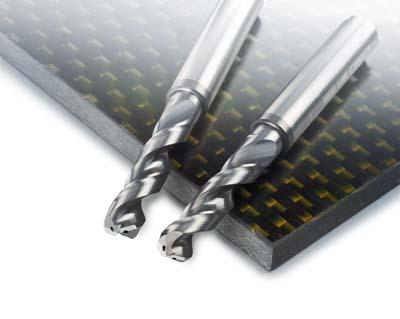
To meet growing demand from the aerospace sector for reliable and efficient holemaking technology in composite materials, cutting tool and tooling systems specialist, Sandvik Coromant is launching its specially designed CoroDrill 854 and CoroDrill 856. Released as part of the company's CoroPak 10.1 new product introductions, CoroDrill 854 and CoroDrill 856 were developed to withstand the harsh demands of the latest CFRP materials and aluminum stacks, offering long and consistent tool life to meet tight tolerances, according to the company. Producing holes in various carbon fiber reinforced plastics (CFRP) demands unique geometries to achieve hole tolerance and quality, as delamination and splintering are common problems. Combining CFRP with a stacked material such as aluminum adds another dimension as the two materials vary in machining techniques. The geometrical shape of CoroDrill 854 is designed to improve hole entrance and hole exit quality on high fiber content materials. Correct selection is critical to successful composite hole making: CoroDrill 854 is preferred where splintering or fraying is the problem, while customers will find more benefit with CoroDrill 856 if delamination is proving to be the difficulty in resin-rich materials. Producing holes in high-resin materials is optimized by the geometry design of CoroDrill 856. Small point angles and high rake angles help to improve hole quality as well as reduce axial forces, which is particularly critical on thin-walled surfaces. Both CoroDrill products help with the elimination of burrs and the enhancement of surface finish. Offering customers a choice of diameters from 0.157" (4mm) to 0.500" (12.7mm), the standard N20C solid-carbide versions with diamond coating are available as stocked items.
Contact Details
Related Glossary Terms
- rake
rake
Angle of inclination between the face of the cutting tool and the workpiece. If the face of the tool lies in a plane through the axis of the workpiece, the tool is said to have a neutral, or zero, rake. If the inclination of the tool face makes the cutting edge more acute than when the rake angle is zero, the rake is positive. If the inclination of the tool face makes the cutting edge less acute or more blunt than when the rake angle is zero, the rake is negative.
- tolerance
tolerance
Minimum and maximum amount a workpiece dimension is allowed to vary from a set standard and still be acceptable.

